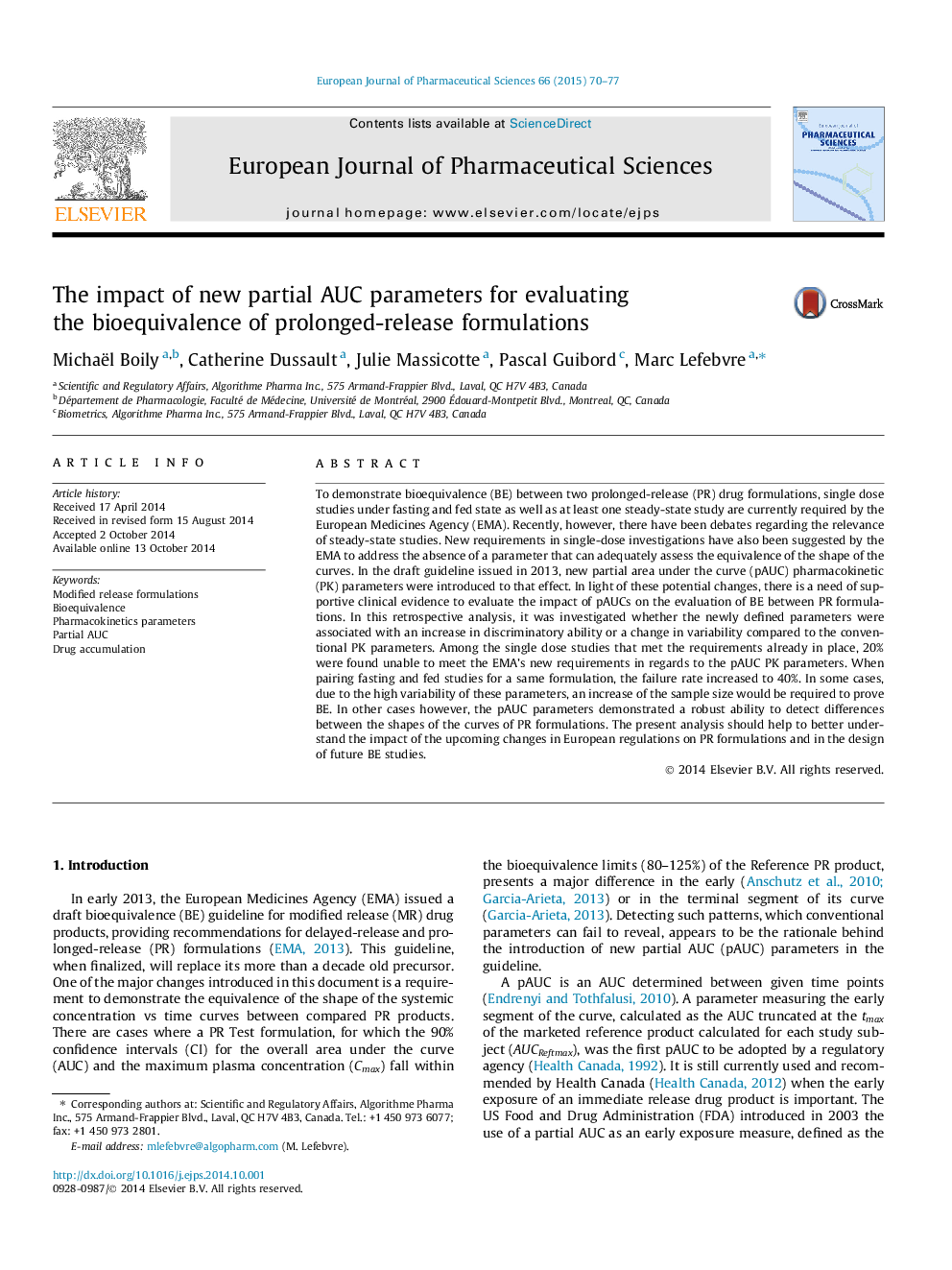| کد مقاله | کد نشریه | سال انتشار | مقاله انگلیسی | نسخه تمام متن |
|---|---|---|---|---|
| 2480427 | 1556184 | 2015 | 8 صفحه PDF | دانلود رایگان |

To demonstrate bioequivalence (BE) between two prolonged-release (PR) drug formulations, single dose studies under fasting and fed state as well as at least one steady-state study are currently required by the European Medicines Agency (EMA). Recently, however, there have been debates regarding the relevance of steady-state studies. New requirements in single-dose investigations have also been suggested by the EMA to address the absence of a parameter that can adequately assess the equivalence of the shape of the curves. In the draft guideline issued in 2013, new partial area under the curve (pAUC) pharmacokinetic (PK) parameters were introduced to that effect. In light of these potential changes, there is a need of supportive clinical evidence to evaluate the impact of pAUCs on the evaluation of BE between PR formulations. In this retrospective analysis, it was investigated whether the newly defined parameters were associated with an increase in discriminatory ability or a change in variability compared to the conventional PK parameters. Among the single dose studies that met the requirements already in place, 20% were found unable to meet the EMA’s new requirements in regards to the pAUC PK parameters. When pairing fasting and fed studies for a same formulation, the failure rate increased to 40%. In some cases, due to the high variability of these parameters, an increase of the sample size would be required to prove BE. In other cases however, the pAUC parameters demonstrated a robust ability to detect differences between the shapes of the curves of PR formulations. The present analysis should help to better understand the impact of the upcoming changes in European regulations on PR formulations and in the design of future BE studies.
Figure optionsDownload high-quality image (140 K)Download as PowerPoint slide
Journal: European Journal of Pharmaceutical Sciences - Volume 66, 23 January 2015, Pages 70–77